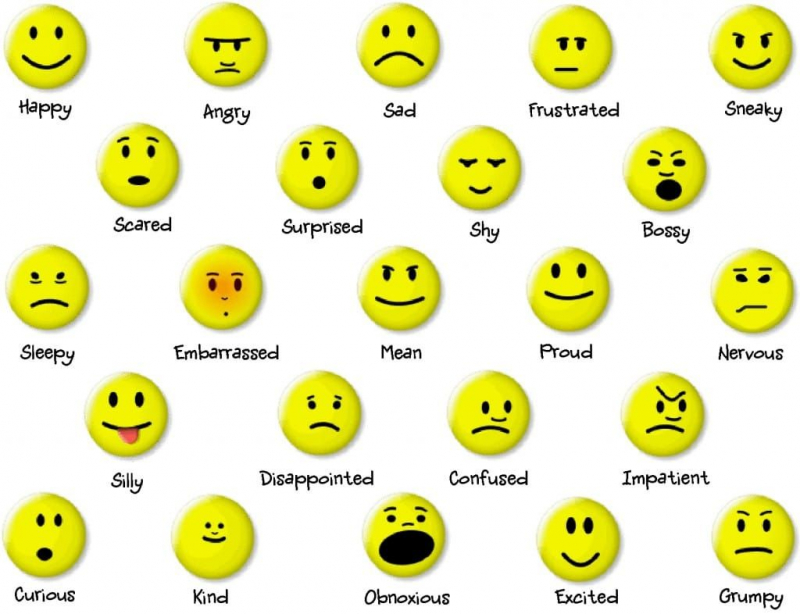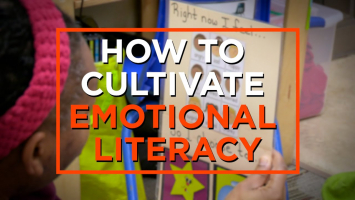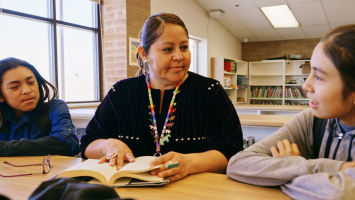Top 5 Best Ways to Build Resilience in Students
For many youngsters, the past year has been a massive disturbance, with the pandemic touching practically every aspect of their daily life. Therefore, adults ... read more...have an important role in helping children acquire the determination and ability to persevere in school and in life. Besides, children also need to know how to deal with adversity by themselves. Resilience is like a muscle that you can strengthen with effort and practice, and it helps think of multiple solutions to a situation. Let's find out the best ways to build resilience in students below!
-
A key element of growing resilience, according to psychologist Ryan C.T. DeLapp, is being able to set personal goals and then being able to withstand the discomfort that creates resistance toward that goal. A daring goal may be to ask students to think about the camera-on/camera-off conundrum and how it affects their personal and academic advancement. That represents a chance for a daring aim.
Many teachers employ a smart framework to assist students in developing personal objectives that are explicit, quantifiable, realistic, relevant, and timely. This talent takes time to develop and is especially crucial for kids in high school. A more productive objective is one that is both ambitious and attainable. When a youngster achieves a goal, it is extremely crucial to celebrate the accomplishment. Students must reflect on their progress toward their courageous objective and express thanks and pleasure when they achieve it.

via: Inspiring Tips 
via: TED -
Learning from failure is critical to developing a resilient young person. Teachers can help by creating a learning environment in which failure, setbacks, and disappointment are an expected and honored part of learning, where students are praised for their hard work, perseverance, and grit, not just for grades and easy successes, and where they are held accountable for producing work in which they feel ownership and internal reward.
Consider making a school bulletin board where students can brag about their worst errors and what they learned from them, in addition to displaying their accomplishments. Tell the class about your own blunders, especially if they were amusing, and what you learned from them. Allow kids to repair errors and resubmit work, and be sure to notice when their work improves because nothing demonstrates learning from mistakes more than improvement. You can also clearly describe some exercises as rough-draft thinking, giving kids the freedom to ask questions, make mistakes, and then edit without fear of failure.

via: James Stanfield Co 
via: TeachHUB -
After being compressed, a stress ball rebounds back to its original shape, making it robust. Similarly, when students experience stress or dissatisfaction, you might think of it as pressure on them that they must overcome. The goal is that by presenting them with resilience-building tactics, they will be able to overcome their dissatisfaction and return to an optimal and productive learning focus.
Recognizing and complimenting children who take acceptable risks and challenge themselves, even if they do not reach the expected results, is one strategy to promote resilience. For example, speaking up during a Zoom class to answer a question, even if the answer is erroneous, or tripping over words while reading aloud. These are moments to gain confidence, take risks, and, most importantly, maintain a robust momentum while in a safe space.

via: Modern Teaching Blog - Modern Teaching Aids 
via: American University -
Recognizing and labeling emotions can help children "become self-aware and begin to control their own emotional states successfully" from elementary school to high school. Students who learn to recognize, name, and understand their emotions are better prepared to make reasonable decisions and manage unsettling or disruptive emotions in their life, all of which are essential components of resilience.
Quick daily emotional check-ins are an excellent place to start in the classroom. Plutchik's Wheel of Feelings can be used by teachers to teach pupils, based on grade level, the words they can use to express the emotions they are experiencing. The emotion wheel can assist teachers to categorize their feelings and their reactions to those emotions. Students can also realize that other emotions are a combination of the eight basic emotions or are descended from one or more of them. This is a profound understanding for them because it allows them to detect emotional triggers and prepare how to respond with excellent self-management skills.

via: Pinterest 
via: Teach Starter -
Writing assignments in middle and high school that focus on "sources of personal strength" might help students explore different approaches to building resilience. The teacher can provide a few prompts to get started: “write about a person who supported you during a particularly stressful or traumatic time. How did they help you overcome this challenge? What did you learn about yourself?” Another idea is that: “write about a time in your life when you had to cope with a difficult situation. What helped and hindered you as you overcame this challenge? What learning did you take away that will help you in the future?”
However, the theme of resilience is applicable across the curriculum and is not limited to one class. There are several opportunities to link resilience to personal success, achievement, and positive social change. Teachers should broaden conversations about political leaders, scientists, literary characters, entrepreneurs, and inventors beyond what they accomplished to include personal strengths and the challenges they faced and overcame in order to achieve their goals. Through these success stories, teachers help children learn to see themselves and their own abilities.

via: Helpful Professor 
via: Resilient Educator


























